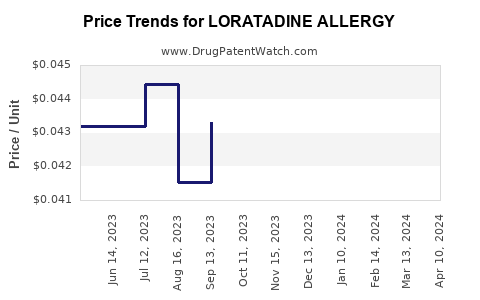Drug Price Trends for LORATADINE ALLERGY
✉ Email this page to a colleague

Average Pharmacy Cost for LORATADINE ALLERGY
| Drug Name | NDC | Price/Unit ($) | Unit | Date |
|---|---|---|---|---|
| LORATADINE ALLERGY 5 MG/5 ML | 54838-0558-40 | 0.03377 | ML | 2024-11-20 |
| LORATADINE ALLERGY 5 MG/5 ML | 54838-0558-40 | 0.04053 | ML | 2024-10-23 |
| LORATADINE ALLERGY 5 MG/5 ML | 54838-0558-40 | 0.04159 | ML | 2024-09-18 |
| LORATADINE ALLERGY 5 MG/5 ML | 54838-0558-40 | 0.04306 | ML | 2024-08-21 |
| LORATADINE ALLERGY 5 MG/5 ML | 54838-0558-40 | 0.03426 | ML | 2024-07-17 |
| >Drug Name | >NDC | >Price/Unit ($) | >Unit | >Date |


